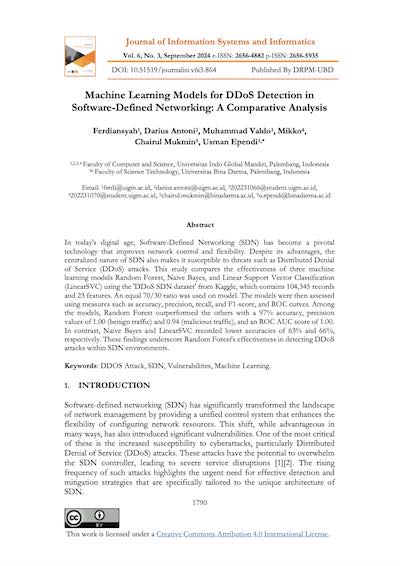Today's article comes from the Journal of Information Systems and Informatics. The authors are Ferdiansyah et al., from Indo Global Mandiri University, in Indonesia. In this paper, the authors train ML models that can detect DDoS attacks while they're occurring. They train three different versions (using Random Forest, Naive Bayes, and LinearSVC) and benchmark them against each other to see which approach is most effective.
DOI: 10.51519/journalisi.v6i3.864


You must be an active Journal Club member to access this content. If you're already a member, click the blue button to login. If you're not a member yet, click the sign-up button to get started.
Login to My Account
Sign Up